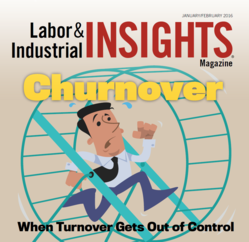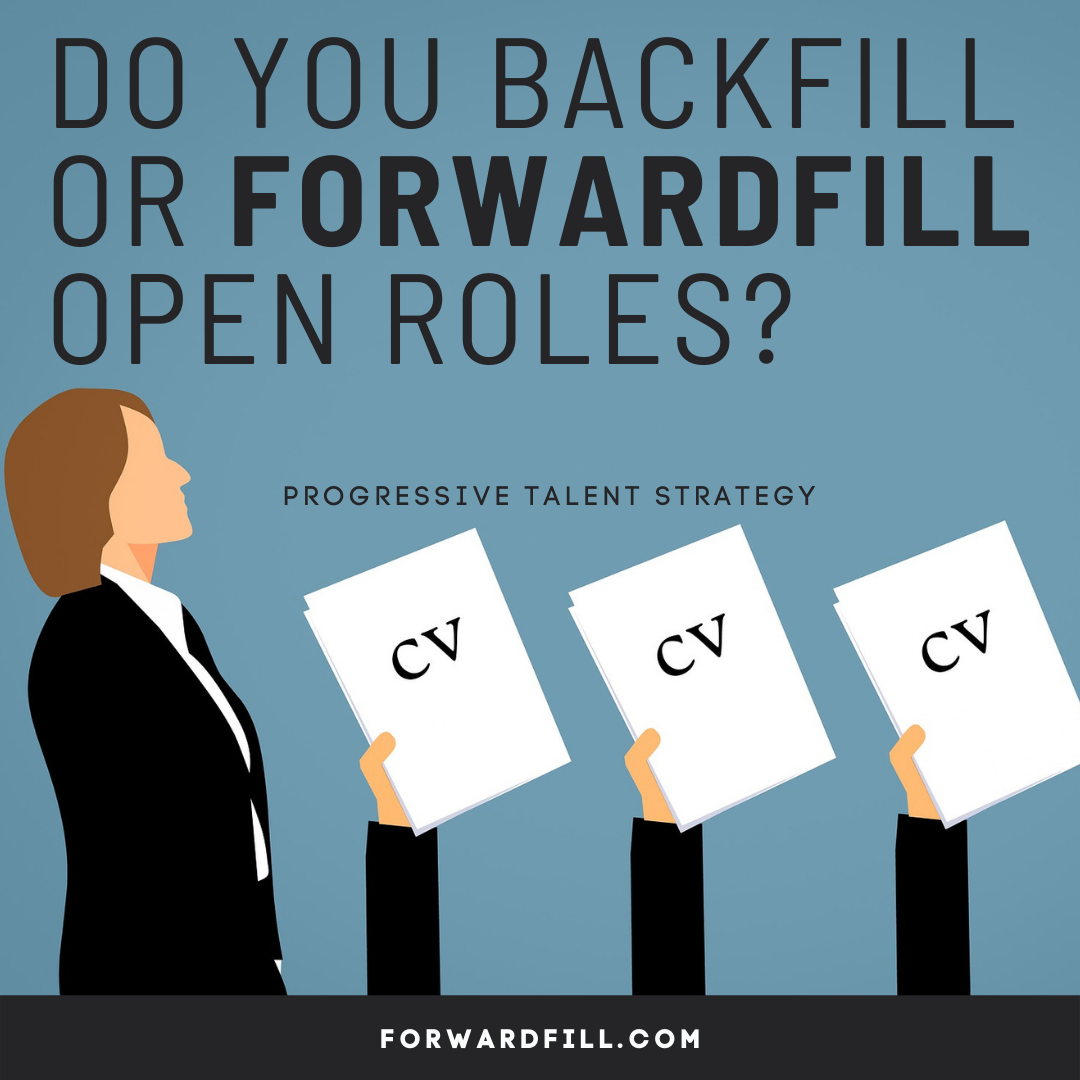12 HR Terms You are Probably Not Familiar with That Can Improve Your Business
At Groove Management, we strongly believe that words matter. The right words can translate into the right actions for an individual, a team or an organization. We focus on semantics and have always looked for unique words to drive dialogue with our clients. Below are twelve terms that we use often with our clients. We can take credit from inventing some of them such as “forwardfill” and “churnover”. It is our hope that you will consider adding these words to your company’s vocabulary.
Click on the terms or the images to link to further information on each topic
Churnover
We define churnover as a recurring opening in the same role or position in an organization due to the fact that new people hired into the role do not stay. Upon investigation and a root cause analysis, there is usually a clear cause of churnover and it is often related to a bad manager or unrealistic job expectations. By measuring churnover as a sub-set of turnover, it is possible to reduce attrition and get to the root of the problem.
ForwardFill
The concept of hiring for the future needs of a position rather than backfilling with a clone of the incumbent. Backfilling positions is a reactive talent management approach that at best maintains the current level of talent within the team. Forwardfilling is a mindset shift and it challenges the hiring manager to think about the future needs of the position, to review the job description and qualifications with an eye towards the evolution of the role. This creates a different hiring profile and evolves the position and candidate pool. This concept coined by Brian Formato has been featured by the Society for Human Resources Management.
Headcount Freeze
A headcount freeze refers to holding your FTE count neutral but continuing to recruit and hire. This requires swapping new talent for underperformers, but it is different than a hiring freeze. When organizations face tough times they often implement hiring freezes. They shut off the recruiting pipeline. This damages the employment brand and leaves leaders having to play with the talent they have. A headcount freeze as an alternative approach keeps the recruiting motion in place and allows managers to replace underperformers with new hires. This improves organizational performance while still maintaining cost control. Reach the SHRM article: Companies Look to Cut Costs with Hiring Freezes: One expert advises freezing headcount instead
Team Timeout
A planned team building session that is mandatory and is focused on improving trust and team effectiveness. In sports teams spend more time practicing than playing and even during games, they call timeout for several strategic reasons. A timeout can shift the momentum and be the difference between winning and losing. In business, teams rarely if ever call timeout. Too many business leaders associate a business timeout with a boondoggle or just a fun team building event. A well orchestrated timeout should include several elements. Most importantly it is an opportunity for the team to work on their dynamics. The team must reflect on what is working, what is not working and what needs to change in order to enhance performance. Groove Management’s core business is the planning and facilitation of team timeouts. What is surprising is that organizations are most reluctant to call timeout when times are tough, yet those are the times that a timeout can have the greatest impact. Read more about the paradox of calling timeout Tough Time are the Most Important Time to Invest in the Team
Riptide Effect
A strategic decision to embrace the current and shift strategy to align with market conditions. When an organization recognizes that fighting the current is a mistake and instead makes a shift to leverage the current to move the organization forward. Change is difficult and the sooner an organization recognizes that resisting is the worst strategy, the sooner the organization can begin to shift and move forward. An example we refer to is the shift we have seen sales organizations make from being geographically aligned to vertically aligned. We have all heard of “going with the flow”. The concept of flow is a good one for organizations to embrace. I was recently with a CEO client who told me that flow is one her company’s themes for 2023. She described flow as a rhythm or cadence for the team and the organization. She said is was about finding their groove which of course resonated with me.
Micro-Leadership
It does not exist and for good reason. Leadership is focused on employee empowerment and freedom. We get a lot of mileage out of this term. Micro-managers are a challenge in many client organizations. We coach some micro-managers and work to help them empower their employees. Asking them to differentiate between management and leadership is usually a good starting point. Asking if they have ever heard of micro-leadership piques their interest and begins a conversation about leading versus managing. Next time you are faced with a micro-manager, ask them about micro-leadership. In most cases people would rather be viewed as a leader versus a manager and employees would certainly rather be led than managed.
Crossboarding
The act of onboarding and assimilating an internal employee transfer. When an employee changes jobs to a new department, a new function or a new manager, an onboarding process should be implemented to ensure their success in the new role. According to HCI, “81% of organizations agree that onboarding internal hires is just as important as onboarding external hires.” Moving employees between teams and departments can be exciting for some and traumatic for others. In either case a well orchestrated move will set the employee up for success in the new role. In the end, employees have options. Engaged employees provide discretionary effort and it all starts with how they are made to feel.
Kryptonite
To frame discussing failure and vulnerability for coaching clients I landed upon the superman analogy and it has been highly effective for me over the past 20 years coaching leaders. We are all aware of Superman’s strengths. He can leap tall buildings in a single bound, is faster than a locomotive, has x-ray vision, can fly, and can bend steel. What separates superman from all other superheroes is the fact that we know about his weakness. Superman has told the world that Kryptonite is his weakness. He believes in the goodness of humankind and is confident that by sharing his weakness with the world, more people will shield him from it than use it against him. This is a great concept for coaching leaders.
Rather than asking clients to divulge their weaknesses, I ask them two questions:
1) What is your Groove? What makes you better, special, or different. This is another way of asking about their superpowers.
2) What is your Kryptonite?
We at Groove Management have even incorporated identifying a clients kryptonite into our Groove360 assessment.
Career Scaffold
We can replace the career ladder with a scaffold. Development does not have to be vertical. Lateral growth is more important and effective. David Epstein in his book Range: Why Generalists Triumph in a Specialized World introduced the concept of a career scaffold instead of a career ladder. I love this concept. Ladders have an end point or a top whereas scaffolds can be infinite. Organizations that embrace career development opportunities for their employees, find ways to rotate people often and create a culture where lateral moves are seen as equally enriching to vertical moves tend to have higher engagement and retention rates. The maximum height of a scaffold is determined by the breadth of the base or foundation. Similarly the trajectory of a persons career should be determined by the breadth of their experiences. The more lateral moves an individual makes the stronger their foundation, which in the long run will allow them to progress higher much like a scaffold. Embedding this concept into the learning and development plans for employees is a new concept that few organizations embrace.
Accordion Effect
An accordion makes music while expanding and contracting. Likewise a company can drive success while centralizing or decentralizing. You must stay in tune with the market conditions. Much like in music, in business companies follow a rhythm. That rhythm is usually determined by the market landscape and external economic conditions. Companies try to stay in tune to the changing business climate and adjust their strategies and resources appropriately. When studying businesses certain patterns emerge, and these patterns can help predict an organization’s long-term success. The accordion player never stops moving the configuration of the instrument. She is constantly making fine tuned adjustments, as should an organization. Aligning the organization’s design with the strategy should be a dynamic process. The market conditions will always be evolving. The best organizations recognize the need to evolve not just the strategy, but also the organizational structure to retain an innovative and dynamic culture which is positioned to capitalize on opportunities.
Mental Fitness
Executive coaching is like hiring a personal trainer for your brain. A focus on emotional intelligence, accountability and alignment. Clearly, there is so much in common between the role of personal trainer and an executive coach. Unfortunately, many view executive coaching as a negative while a personal trainer is always seen as a positive. There should be no negative stigma around having an executive coach. If you want to improve your leadership performance an executive coach can be the key. If you are serious about improving your mental fitness, consider hiring an executive coach. There are several resources that can be utilized to find an executive coach who is right for you. This framing of executive coaching has been very helpful when working with clients to shift the focus of coaching within their organization from remedial to performance enhancing.
Healthy Tension
The word conflict gets a bad rap, but conflict can lead to better decisions. Reframe conflict as healthy tension. Shifting ones paradigm to recognize a conflict as an opportunity can have a dramatically positive impact on how the conflict is addressed. Instead of trying to avoid conflicts organizations begin to embrace conflict as the powerful decision making tool that it can be. The absence of conflict often leads to group think where teams or organizations make decisions that are contrary to the decisions that members of the team or organization would make on their own. This is a common yet dangerous outcome of not engaging in conflict. At Groove Management, we believe that conflict is a powerful decision making tool that teams can learn to leverage. If you are feeling conflicted, then you are engaged. That tension is a good thing. When people avoid conflict they tend to be disengaged. Employee engagement is one of the biggest issues that companies struggle to address. We believe that there is a correlation between the level of engagement and the amount of conflict that exists in an organization. Too little conflict is a sign of a lack of engagement, but at the other end of the spectrum too much conflict also lead to lower engagement. It is important to strike a happy balance.
Curious to know which of these HR terms resonates most with you. If you choose to add any of these terms to your company vernacular, please let us know how it is received and the impact it has. We will continue to create content and expand our organizational vocabulary incorporating new phrases and making up new ones along the way.












